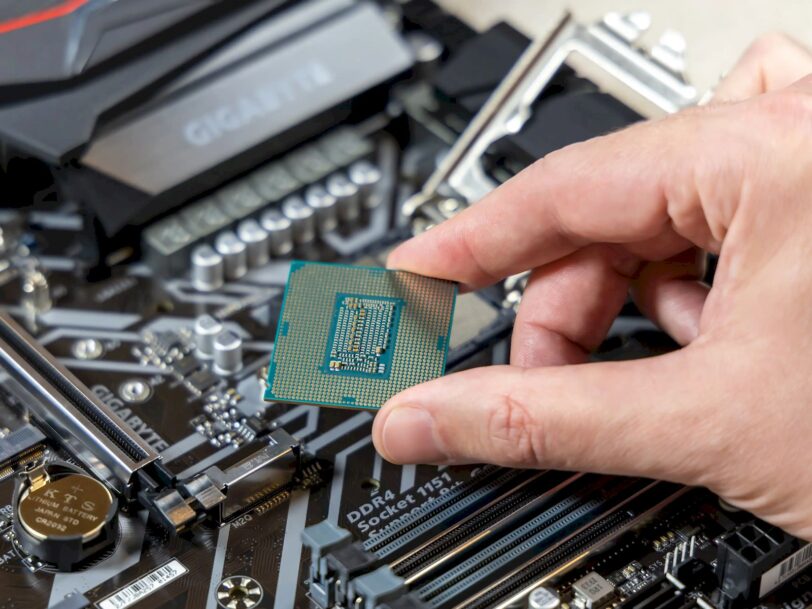What is the difference between Intel i3 and i5 processors?

Have you ever been in the process of purchasing a new computer and wondered what processor it should have? What is the difference between Intel i3 and i5 processor? If you are one of those who find yourself choosing between these two processors or just want to know how good your processor is, this is the place for you.
Most people assume that the higher the number, the better the product, but choosing the best processor is a little more complicated than you might think. You should look beyond Intel Core i processors; You should check the core count, operating frequency, cache and other aspects. Let’s review some of the things you need to know before making your choice.
Different processor families have different features that determine their efficiency levels. In simpler terms, the frequency in GHz is less important compared to the amount of work it does.
Additionally, a processor designed for a laptop or tablet device must be battery efficient; many desktop processors have never had to worry about this, but many other aspects are the same. Therefore, we will introduce these concepts for better understanding.
Differences between Intel Core i3 and i5 processors
Number of cores
Single-core processors are practically extinct today, and for good reason. Of all the factors listed below, the number of cores in your processor will have the most significant impact on processor performance. Intel Core i3 processors are dual core. i5 processors have 4 cores. That’s why people often assume that i3 processors are the lowest in the series. However, each core has the capacity to operate as its own independent processor, and most applications cannot fully take advantage of the potential of a multi-core system. You can work just as efficiently with an i3 processor as with an i5. On the other hand, a computer can perform multiple tasks more efficiently with multiple cores.
Turbo Boost
i3 processors have a higher number of clock cycles than some i5 models. As I mentioned, the number of GHz does not define efficiency and so you need to look deeper. In simpler terms, the GHz count is the number of clock cycles the processor can process in one second.
So the more GHz, the faster the processor and this is where Turbo Boost comes to the fore. Turbo Boost is not about clock speed as the name suggests. It is a technology marketing terminology that allows a processor to dynamically increase the number of clock cycles when the need arises. A processor can consume less power, produce less heat, and increase its speed when extra power is needed.
For example, the Core i3-7300 processor runs at 4 GHz, while the Core i5-7600 runs at 3.5 GHz, the i5 chip can go up to 4.1 GHz when necessary and therefore be faster when necessary.
Cache
The efficiency of a processor also depends on its caching. If the processor needs certain data repeatedly, it retrieves the data from RAM and stores it in cache; This is significantly faster than other memory in a computer, which makes the cache run significantly faster. The i5 processor is better in this case because it usually has more than twice the cache storage of the i3 models.
Hyper Threading
This concept is a little more complex and confusing. A thread in this terminology is a set of instructions that the processor executes. A core can only run one thread at a time. However, Hyper Threading splits a physical core into 2 logical cores. It allows the processor to work twice as hard at the same time. Thus, a 2-core system will run like a 4-core system, and a 4-core system will run like an 8-core system. However, the confusing part of this concept is that the i5 series does not have this feature, although the i3 series does. Therefore, an i3 processor can sometimes be as useful as an i5 processor.
Terminology
Intel also uses serial numbers on all its models. The numerical part of the series defines the generation. However, there are also letters that indicate special uses. These letters and their usage areas are:
- H – High performance graphics.
- K – overclockable.
- Q – Quad-core (four physical cores).
- T – Optimized for desktops
- U – low power, usually found in laptop processors (slower than desktop chips).
If you choose an i3 processor, this is because you will be using a computer for basic tasks that do not require large amounts of resources; If your tasks are very demanding in terms of resources, it is best to opt for an Intel Core i7 or Core i9 processor; If you are in a middle position, then the ideal one for you is the Intel Core i5 processor. If you want to get more information about the Intel processor family, you can check out the attached article below.